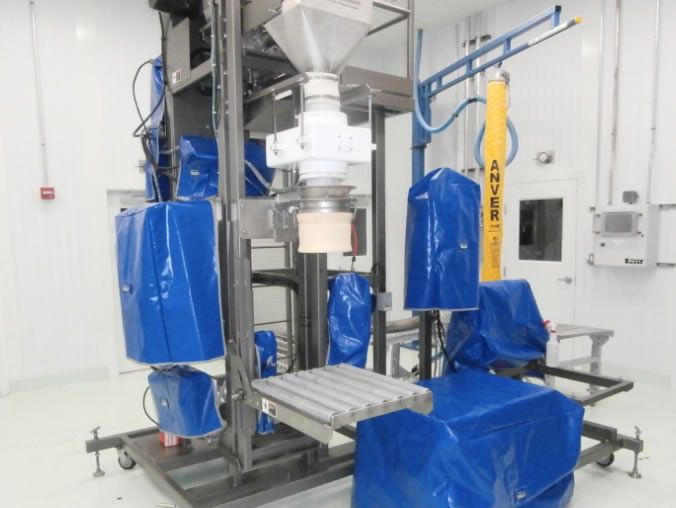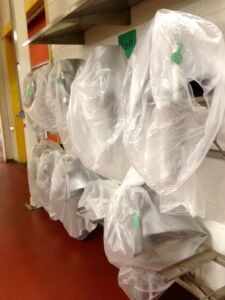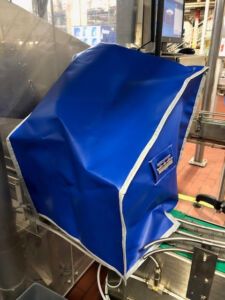For manufacturing plants – from food and drink makers to pharmaceutical companies – shielding equipment from the effects of a sanitized washdown is critical. Also important is preventing washdown waste and mishaps. Washdowns meet a responsibility that manufacturers have to consumers to prevent cross-contamination that could endanger public health.
Sanitation is usually achieved via facility washdowns, where line equipment is cleansed with high-pressure water, chemicals, or a combination of the two, ensuring equipment like a packaging machine is clean inside and out.
One of the challenges these washdowns pose, however, is a risk of damaging sensitive components such as motors, servo drives, cameras and touch panels (i.e., washdown mishaps). Typically, workers preparing for a washdown cover sensitive equipment with duct tape and plastic bags. Or they invest in a custom-fit, reusable rain shield made of vinyl-coated polyester to cover sensitive technology.
While plastic bags and duct tape seem cheaper than a custom-fit rain shield, the plastic-and-tape method poses problems (e.g., washdown waste in the form of plastic and tape in landfills). One danger with a plastic-and-tape approach is that poorly applied plastic wraps can tear. Should a strong, hot jet of water tear the plastic covering, the sensitive component underneath may need to be replaced altogether, costing the company money and potentially slowing production because of a washdown mishap. If you damage a sensitive component like a camera or touchscreen panel even once, a manufacturer has likely paid for what a rain shield costs.
If a facility uses caustic chemical washdowns, managers also risk the residue from these chemicals getting past the plastic wraps. If these residues are exposed to sensitive electrical components, they can eat away at conductors, opening the company up to more costly repairs and yet another washdown mishap. Even when a washdown has dried out, if you’re using caustics, there’s a potential for short-circuits to happen.
Shannon’s Rain Shield solutions prevent these issues by completely and expertly covering components with durable materials that withstand high-pressure water, temperature and chemicals. Shannon custom designs each Rain Shield for the application and labels each shield with a durable ID tag and lanyard, so workers can easily cover a component and remove the shield any time a washdown begins or ends. A reusable Rain Shield reduces washdown waste, too. Since each plastic covering is only used once and thrown away, Shannon Rain Shields, which can last up to 15 years, are a perfect solution to meet zero-waste initiatives



